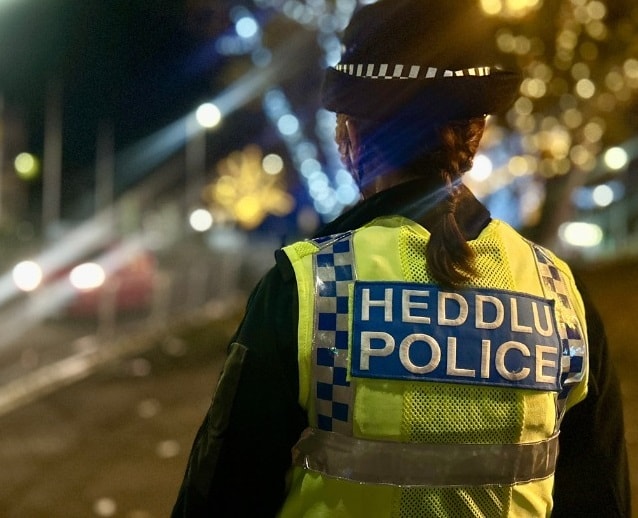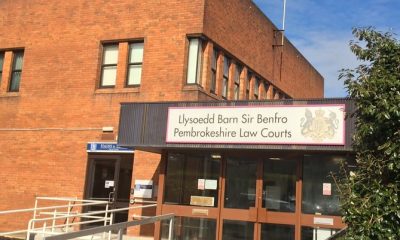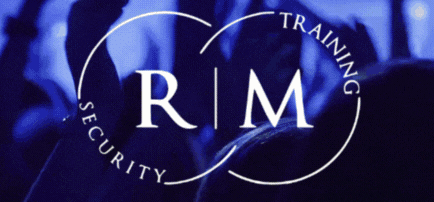News
Experimental forms and structures in modern essay writing

IN THE REALM of modern essay writing, a growing number of writers have been exploring experimental forms and structures to push the boundaries of conventional storytelling. These experimental essays, characterized by their unique and innovative approaches, offer readers a fresh perspective on traditional topics and challenge the way we perceive and interact with written narratives. Within these essays, authors employ various types of tones in writing to evoke different emotional responses and convey nuanced messages.
Understanding Experimental Forms in Essay Writing
Experimental forms in essay writing have evolved over time, breaking away from the rigid structures traditionally associated with the genre. Rather than conforming to a linear narrative format, experimental essays embrace unconventional techniques to deliver their message.
One of the key characteristics of experimental essays is their ability to surprise and engage readers. By subverting reader expectations and defying conventional storytelling norms, these essays encourage readers to explore new ways of thinking and experiencing narratives.
Creativity plays a crucial role in experimental writing. Writers are encouraged to think outside the box and explore uncharted territories to create unique and compelling essays. This emphasis on creativity allows writers to experiment with various narrative techniques, ultimately resulting in essays that push the boundaries of traditional storytelling.
When it comes to experimental forms in essay writing, there is no limit to the possibilities. Writers have the freedom to explore and employ a wide range of techniques to convey their ideas. For example, they may incorporate visual elements such as images, diagrams, or even interactive elements to enhance the reader’s understanding and engagement with the essay.
Furthermore, experimental essays often blur the line between fact and fiction, challenging the reader’s perception of reality. Through the use of imaginative storytelling, writers can create a unique blend of personal experiences, historical events, and fictional elements, offering readers a thought-provoking and immersive reading experience.
Additionally, experimental essays can also incorporate unconventional structures and formats. Writers may choose to abandon the traditional introduction-body-conclusion format and instead opt for fragmented narratives, nonlinear storytelling, or even choose to present the essay as a series of interconnected vignettes. This allows for a more dynamic and engaging reading experience, as readers navigate through different perspectives and ideas.
Ultimately, experimental forms in essay writing provide a platform for writers to challenge the status quo and explore new possibilities. By embracing unconventional techniques, writers can break free from the constraints of traditional storytelling and create essays that are not only intellectually stimulating but also emotionally resonant. So, the next time you come across an experimental essay, be prepared to embark on a journey that will expand your horizons and redefine your understanding of the genre.
The Impact of Structure in Modern Essays
The shift from traditional to modern structures has had a profound influence on the way readers perceive and engage with essays. As writers increasingly explore innovative structures, readers are exposed to new ways of comprehending and interpreting written texts.
Modern structures in essays focus on breaking away from linear narratives. By employing non-linear storytelling techniques, writers can challenge the notion of a single chronological order and instead create narratives that are fragmented or out of sequence. This fragmentation can enhance the overall impact of an essay by allowing readers to piece together information in their own unique way.
However, striking a balance between coherence and innovation is crucial. While challenging traditional structures can be captivating, it is important for writers to maintain a level of coherence that allows readers to follow the essay’s central themes and ideas. By doing so, writers can ensure that their experimental structures enhance the reader’s experience rather than detract from it.
One example of a modern essay structure that has gained popularity in recent years is the braided essay. This structure weaves together multiple narratives or themes, creating a rich tapestry of ideas. The braided essay allows writers to explore different perspectives or experiences, highlighting the interconnectedness of seemingly unrelated topics. This structure can be particularly effective when discussing complex or multifaceted subjects, as it provides a framework for exploring various angles and dimensions.
Another innovative structure that has emerged in modern essays is the use of visual elements. Incorporating images, charts, or graphs into an essay can add a layer of depth and engagement for the reader. Visual elements can serve as visual metaphors, reinforcing the essay’s themes or providing additional context. They can also break up the text, offering moments of respite and visual stimulation. However, it is important for writers to use visual elements judiciously, ensuring that they enhance the overall narrative rather than distract or overwhelm the reader.
Techniques for Writing Experimental Essays
Embracing non-linear narratives is one technique commonly employed in experimental essay writing. By weaving together various threads and narratives that may not follow a linear timeline, writers can create a more complex and multi-dimensional reading experience. This non-linear approach can provoke thought and encourage readers to actively engage with the text.
Another technique for writing experimental essays involves incorporating visual elements. By using images, illustrations, or multimedia elements, writers can enhance the essay’s impact and create a more immersive experience for the reader. Visual elements can convey emotions, concepts, or ideas that text alone may struggle to capture.
The use of fragmentation and disjunction is also prevalent in experimental writing. By deliberately interrupting the flow of the essay, writers can create a sense of disorientation or surprise, capturing the reader’s attention and challenging their preconceived notions. This technique can be particularly effective when exploring themes of identity, memory, or perception.
The Challenges and Rewards of Experimental Writing
While writing experimental essays can be liberating and exciting, it is not without its challenges. One of the primary hurdles writers face is the fear of breaking norms and venturing into uncharted territory. Traditional essay writing has long been governed by established rules and structures, making it difficult for writers to deviate from the familiar. However, by embracing experimentation, writers can release themselves from these constraints and discover new forms of expression.
Despite the challenges, the rewards of experimental writing are plentiful. Creating unique narratives that defy expectations can be deeply satisfying for both the writer and the reader. Experimental essays have the potential to captivate and engage readers on a deeper level, inviting them to question their assumptions and experience the world in fresh and unexpected ways. This unique connection between writer and reader is an essential aspect of experimental writing that fosters exploration and sparks intellectual growth.
To Sum Up
Overall, experimental forms and structures in modern essay writing offer a refreshing departure from traditional conventions. By embracing creativity, exploring innovative structures, and challenging reader expectations, writers can create essays that captivate, engage, and leave a lasting impact on their audience.
Crime
Man spared jail after baseball bat incident in Milford Haven

Judge says offence was so serious only a prison sentence was justified
A 44-YEAR-OLD has been given a suspended prison sentence after admitting carrying a baseball bat in a public place during an incident in Milford Haven.
Ian Parker, of Cwrt Garreg, Cefn Glas, Bridgend, appeared for sentence at Haverfordwest Magistrates’ Court on Tuesday (Dec 9).
The court heard that on Tuesday (Oct 29), Parker travelled to Prioryville, Milford Haven, where he was found in possession of an offensive weapon — a baseball bat — without lawful authority or reasonable excuse.
Earlier hearings were told that Parker believed his son was at risk and had travelled from Bridgend to Milford Haven. During the incident, another man was struck with the bat before Parker left the scene. Parker later admitted the offence and entered a guilty plea on November 18, with sentencing adjourned for a pre-sentence report.
Passing sentence, District Judge M Layton said the offence was so serious that only a custodial sentence could be justified.
Parker was sentenced to 36 weeks’ imprisonment, but the sentence was suspended for 24 months after the court accepted there was a realistic prospect of rehabilitation.
He will be subject to 24 months of supervision and must complete 200 hours of unpaid work within 12 months. The court also imposed a rehabilitation activity requirement of up to 25 days, requiring Parker to attend appointments and take part in activities as directed by probation services.
The baseball bat was ordered to be forfeited and destroyed under the Prevention of Crime Act 1953.
Parker was also ordered to pay £85 in prosecution costs and a £187 surcharge, to be paid in full within 28 days.
The judge warned that any breach of the suspended sentence order could result in the prison term being activated.
Business
Independent brewers join call for business rates relief as pub closures feared

INDEPENDENT brewers have joined growing calls for urgent, pub-specific relief on Business Rates amid fears that community pubs across west Wales and beyond could be forced to close.
The Society of Independent Brewers and Associates (SIBA) has warned that changes announced in the Autumn Budget will see pub costs rise sharply over the next three years, with the average pub facing a 76% increase in Business Rates. By comparison, large warehouse-style premises operated by online and technology giants are expected to see increases of around 16%.
The issue will be discussed at a meeting taking place on Monday in Saundersfoot, where local publicans, small brewers and business representatives are due to come together to examine the impact of rising Business Rates and escalating operating costs. The meeting is expected to focus on the future sustainability of community pubs, particularly in coastal and rural areas where they often act as vital social hubs as well as key local employers.
Independent breweries are particularly exposed, SIBA says, as the vast majority of their beer is sold through local community pubs. Many small breweries also operate their own pubs or taprooms, meaning they are hit twice by rising rates. Some independent brewers have reported rateable value increases of up to 300%, creating new costs they say will be extremely difficult to absorb.
New industry research published on Thursday (Dec 12) suggests that introducing a pub-specific Business Rates relief of 30% from April 1, 2026 could protect around 15,000 jobs currently under threat in the pubs sector and help prevent widespread closures.
The call for action follows an open letter sent last week by SIBA’s board, expressing deep concern at the impact of the Budget’s Business Rates decisions on the hospitality sector.
Andy Slee, Chief Executive of SIBA, said: “The last orders bell is ringing very loudly in our community pubs after the shock changes to Business Rates in the Budget.
“Publicans and brewers feel badly let down by a system that still isn’t fairly addressing the imbalance between big global tech companies and small business owners.
“We were promised proper reform of Business Rates in the Labour manifesto last year and a rebalancing of the tax regime, but this has not been delivered. Pubs therefore need urgent help to address the planned increase in costs through a pub-specific relief, followed by full and meaningful reform.”
Those attending Monday’s meeting in Saundersfoot are expected to consider how local voices can feed into the national debate and press for urgent action to protect community pubs across Pembrokeshire.

Community
Annual charity carol service raises funds for good causes

MID and West Wales Fire and Rescue Service held its annual Charity Carol Service on Wednesday (Dec 10) at Ebeneser Baptist Chapel in Crymych.
The event brought together members of the local community alongside Fire Service staff for an evening of carols, readings and festive refreshments, marking the Christmas season in a warm and inclusive atmosphere.
This year’s service supported two important charities — the Fire Fighters Charity and Cancer Research Wales — with all proceeds going directly towards their ongoing work.
A total of £597 was raised on the night, which will be shared equally between the two charities.
The Service thanked the congregation at Ebeneser Baptist Chapel for hosting the event, as well as everyone who gave their time, support and generosity to make the evening such a success.

-

 Crime4 days ago
Crime4 days agoPhillips found guilty of raping baby in “worst case” judge has ever dealt with
-

 Crime3 days ago
Crime3 days agoKilgetty scaffolder sentenced after driving with cocaine and in system
-

 Crime3 days ago
Crime3 days agoHousing site director sentenced after failing to provide breath sample following crash
-

 Crime3 days ago
Crime3 days agoMotorist banned for three years after driving with cannabis in system
-

 Education2 days ago
Education2 days agoTeaching assistant struck off after asking pupil for photos of her body
-

 News5 days ago
News5 days agoJury retires tomorrow in harrowing Baby C rape trial
-

 Crime4 days ago
Crime4 days agoMilford Haven pensioner denies exposure charges
-

 Local Government6 days ago
Local Government6 days agoNew defamation row erupts after anonymous website targets Herald editor
























